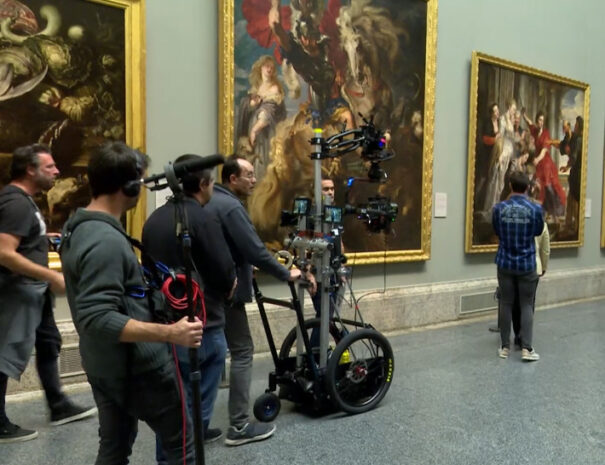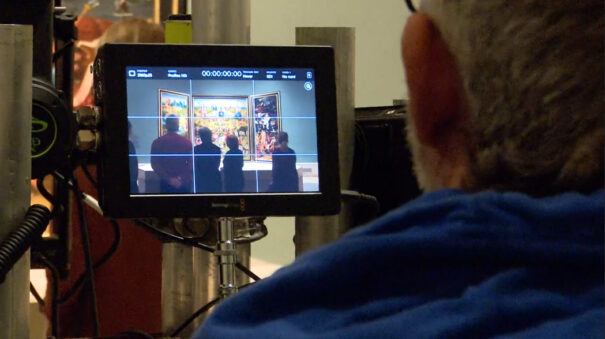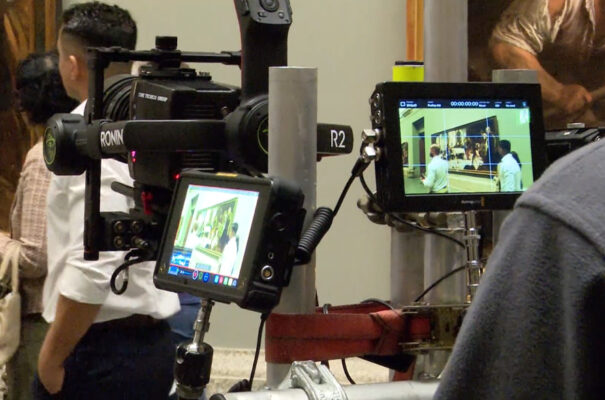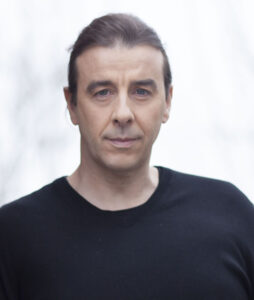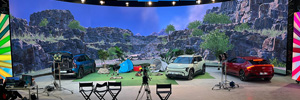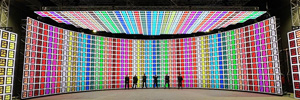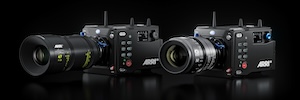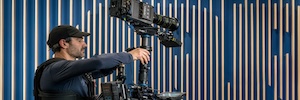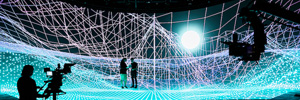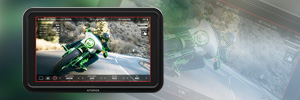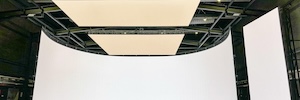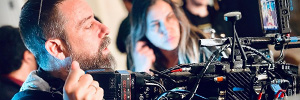¿Cómo se crea técnicamente un programa de Slow TV?
Roberto Roldán, responsable de contenidos de Factoría Henneo, comparte las claves técnicas que dan forma a la Slow TV, un formato emergente y rupturista con la propia naturaleza televisiva.
El ingrediente clave de la televisión lenta o de los Slow TV es una línea de tiempo ininterrumpida en la que nada se edita y todo se emite según está pasando. Es el espectador el que decide contemplar el paso del tiempo, adquiriendo constancia del mismo y abandonando su mente a una experiencia diferente.
Lo ideal es retratar un evento en tiempo real para que el espectador tenga la sensación de asistir al evento, de estar ahí, en el tren, en el barco, o en el escenario elegido. Uno puede pensar viendo el resultado final, que la producción de un slow es algo muy sencillo.
Esa es una gran primera equivocación.
Contra la imprevisibilidad
La grabación de una experiencia slow a tiempo real, donde nunca sabes lo que puede pasar, hace que las decisiones técnicas que tomes a la hora de abordar el programa sean más que determinantes para el buen resultado final. Hablamos de la producción de un evento que suele durar varias horas y donde no existe la posibilidad de parar y volver a empezar, por lo que todo lo imprevisible que pueda pasar tiene que estar estudiado, previsto y probado.
La experiencia de Factoría Henneo en Slow TV nos ha llevado a grabar en la cabina tractora de un tren durante cuatro horas, en una embarcación por el río Ebro, en un recorrido por el Museo del Prado o en una UCI en plena pandemia de Covid. Todas, experiencias distintas y que nos han enfrentado a problemas técnicos diferentes. En cada caso podríamos decir que la producción ha sido personalizada. Es fundamental vivir la experiencia y decidir cuál es la cámara más adecuada, los objetivos, el tipo de lente, el sistema de estabilización, el anclaje del equipo, el de almacenaje, el sonido…
El caso de La Visita
La Visita es un recorrido por el Museo del Prado. Desde los exteriores, entramos a la pinacoteca y emprendemos un recorrido por las salas más importantes del museo. El recorrido incluye, además de la contemplación de las obras, el paso de una sala a otra o la entrada en un ascensor.
Con carácter previo, se perfilaron claramente los desafíos a afrontar, comenzando con su estimación de duración: casi tres horas. Todo el formato se realizó en un plano secuencia y se siguieron estándares cinematográficos, tanto en cámara (ópticas) as in lighting. Bajo criterios de contenido, se seleccionaron 55 obras. Las más características del museo: es decir, aquellas que reflejan de manera más fidedigna la esencia de un museo como El Prado.
En todo momento, la cámara que grabó el documental se movió con naturalidad por las galerías del museo, sin alterar a los visitantes habituales del día de rodaje. Se trató de hacer una inmersión de la experiencia real de un visitante más en el Prado, incluso recogiendo el sonido ambiente: pasos, murmullos, comentarios ocasionales de otros visitantes…
Otra clave fue la creación de la hoja de ruta que siguió la cámara desde su incursión en el museo. Fue este documento un punto de referencia constante, ya que incluyó con detalle no solo la trayectoria de la cámara, sino también los giros de ésta, los objetos a sortear (bancos, esculturas, paneles informativos…) colocados dentro de las galerías y la duración temporal en cada obra, entre otros datos clave.
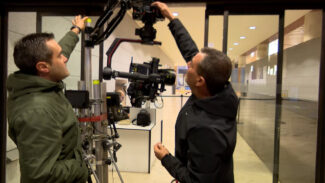 Desafíos técnicos de La Visita
Desafíos técnicos de La Visita
Ya dentro de la realización del proyecto, uno de los principales problemas fue la correcta estabilización. Para abordar esta área, se barajaron diferentes posibilidades técnicas que se encuentran en el mercado.
Lo primero que se estudió fue la utilización de un steadicam, que se desechó debido a la larga duración del esfuerzo exigido al operador. A continuación, se valoró llevarlo a cabo mediante un estabilizador de tres ejes, algo que, si bien rebajaba el coste de la realización (haciendo esta operación más sencilla), el propio equipo técnico consideró que no estaría acorde con la calidad del proyecto.
El Museo del Prado requería un tratamiento cinematográfico adecuado a las obras que hay que recoger en imágenes. Se procedió entonces a realizar una verdadera labor de investigación y desarrollo, que resultó en el diseño y fabricación de forma exclusiva de un dispositivo móvil para la labor de realización, que tenía los siguientes objetos:
- Un dolly neumático de fabricación alemana, del que solo se dispone de una única unidad en España, cuyas dos ruedas permitieron hacer giros precisos. Además, su reducido espacio dejaba desplazarse entre grupos de personas con naturalidad. Por otra parte, encajaba en el volumen disponible en el ascensor del museo, fundamental para mantener el plano secuencia entre la planta 0 y la 1.
- Sobre el citado Dolly, se armaron tres sistemas de estabilizadores, que destacan por ser los de más alta calidad disponibles.
- Finalmente, los estabilizadores dieron servicio a una cámara de formato cine. Una ARRI Alexa Mini, la más adecuada para el sistema estabilizador elegido, ya que no se perdió nunca la calidad que requiere este tipo de rodajes. Del mismo modo, se empleó óptica que se cuenta entre la mejores del mercado y que permitió no solo registrar la sutileza de matices de cada obra maestra del Prado, sino también mantener los colores y no aberrar ninguno de los cuadros.
Una televisión realista
El resultado final buscó acercarnos de la manera más fiel posible a la realidad, a través de un movimiento suave, estilizado, natural pero no orgánico, y con una elegante simulación robotizada.
Finalmente, tuvo lugar el rodaje definitivo. Se realizó siguiendo el plan establecido, en tiempo real, tal y como posteriormente se emitió.
Se logró así superar un reto de primer nivel dentro del campo audiovisual, que ha sido reconocido desde diferentes ámbitos del sector televisivo y que está llamado a ser referente en futuros proyectos relacionados con el formato Slow TV.
Roberto Roldán
Responsable de contenidos de Factoría Henneo.
Did you like this article?
Subscribe to us RSS feed And you will not miss anything.



